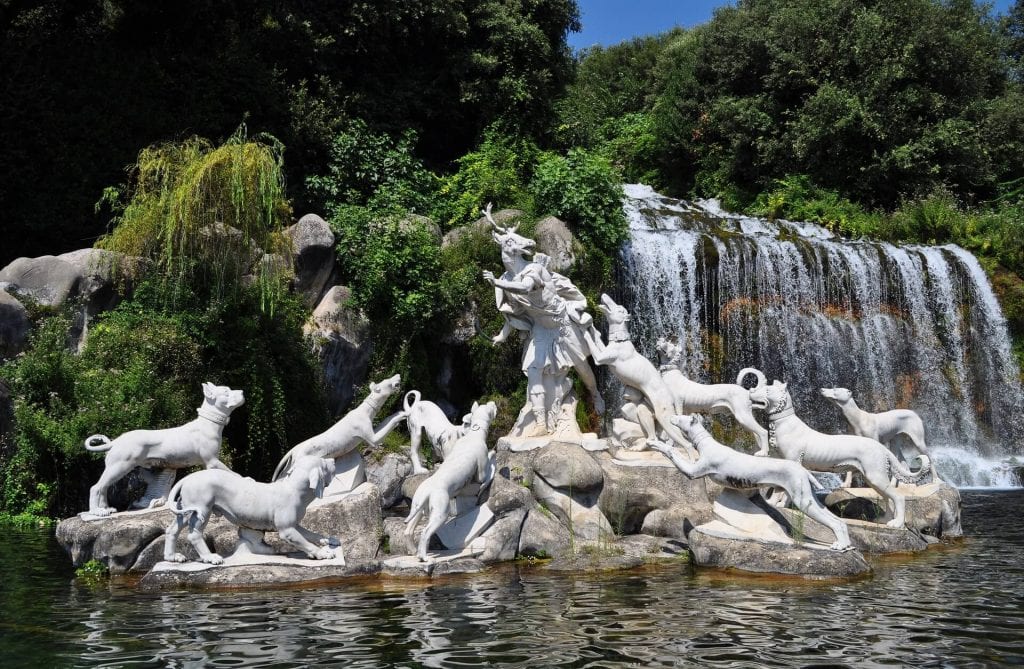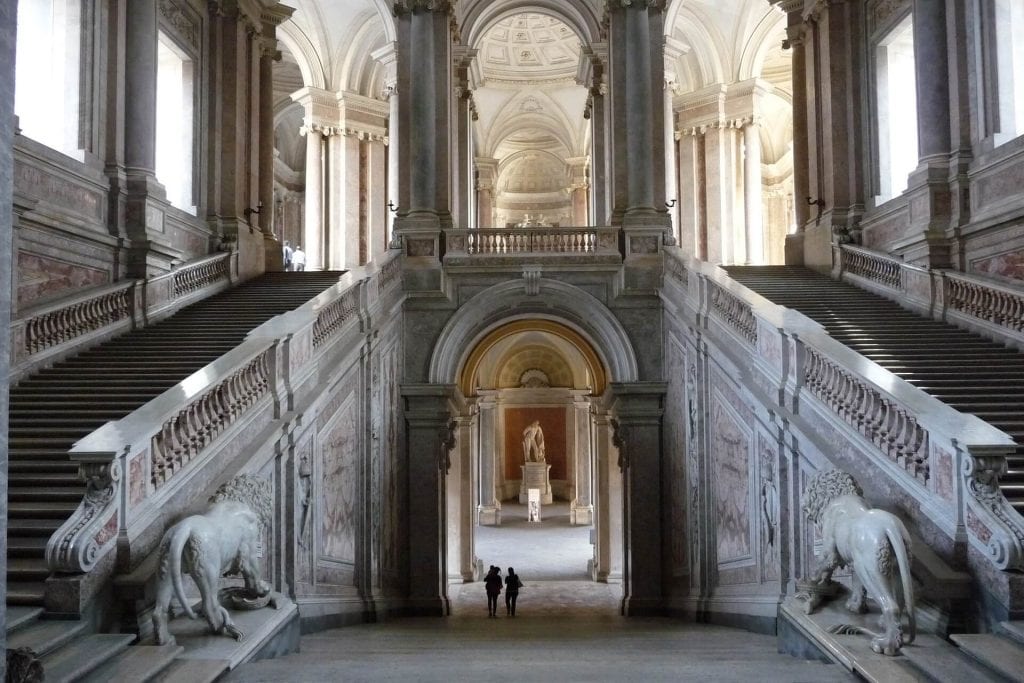Caserta is the capital of the province of Caserta in the Campania region of Italy. It is an important agricultural, commercial and industrial comune and city.
Caserta is located on the edge of the Campanian plain at the foot of the Campanian Subapennine mountain range.
- Caserta’s main attraction is its Royal Palace (designated as a UNESCO World Heritage Site in 1997).
The royal palace (“Reggia”) was designed in the 18th century by the Italian architect Luigi Vanvitelli, recalling Versailles, as a residence for the Bourbon kings of Naples and Sicily
- Palazzo Vecchio (“Old Palace”), a construction of the 14th century renovated by Luigi Vanvitelli as provisional residence for the royal court.
- The Cathedral (1800s).
- The Aqueduct of Vanvitelli (18th century).
Royal Palace of Caserta
The Royal Palace of Caserta (Italian: Reggia di Caserta) is a former royal residence in Caserta, constructed by the House of Bourbon-Two Sicilies as their main residence as kings of Naples. It is the largest palace erected in Europe during the 18th century

The Royal Palace of Caserta 
Staircase
The construction of the palace was begun in 1752 for Charles VII of Naples (Charles III of Spain), who worked closely with his architect, Luigi Vanvitelli. When Charles saw Vanvitelli’s grandly scaled model for Caserta, it filled him with emotion “fit to tear his heart from his breast“. In the end, he never slept a night at the Reggia, as he abdicated in 1759 to become King of Spain, and the project was carried to only partial completion for his third son and successor, Ferdinand IV of Naples.
The political and social model for Vanvitelli’s palace was Versailles, which, though strikingly different in its variety and disposition, solves similar problems of assembling and providing for king, court and government in a massive building with the social structure of a small city, confronting a baroque view of a highly subordinated nature, la nature forcée. This was part of the entire concept of the palace when it was first proposed by Mario Gioffredo sometime in 1750. According to Hersey, the proposal envisaged a palace “that was a virtual city, housing not just the court and king but all the main political and cultural elites of the Kingdom of the Two Sicilies – university, museum, library, cabinet bureaus, military high commands, and so on.“
Another of the king’s primary objects was to have a magnificent new royal court and administrative center for the kingdom in a location protected from sea attack, and distant from the revolt-prone and congested city of Naples. To provide the king with suitable protection, troop barracks were housed within the palace.
The palace has 5 floors, 1,200 rooms, including two dozen state apartments, a large library, and a theatre modelled after the Teatro San Carlo of Naples. A monumental avenue that would run 20 kilometers between the palace and Naples was planned but never realized.
Caserta is by far the largest royal palace in the world in terms of volume, with more than 2 million m³. Behind the façades of its matching segmental ranges of outbuildings that flank the giant forecourt, a jumble of buildings arose to facilitate daily business. The palace encloses four courts that feature what scholars describe as well-proportioned interior that evoke a monotonous dignity, unique in its time.
Of all the royal residences inspired by the Palace of Versailles, the Reggia of Caserta is the one that bears the greatest resemblance to the original model: the unbroken balustraded skyline and the slight break provided by pavilions within the long, somewhat monotonous façade.
As at Versailles, a large aqueduct was required to bring water for the prodigious water displays. Like its French predecessor, the palace was intended to display the power and grandeur of an absolute Bourbon monarchy. A solecism at Caserta is that above the piano reale, the King’s floor, is another floor of equal magnificence. The royal palace has more than 40 monumental rooms completely decorated with frescoes when, in comparison, Versailles counts only 22 monumental rooms.
The Garden
The garden, a typical example of the baroque extension of formal vistas, stretches for 120 ha, partly on hilly terrain. It is also inspired by the park of Versailles.
The park starts from the back façade of the palace, flanking a long alley with artificial fountains and cascades.
There is a botanical garden, called “The English Garden“, in the upper part designed in the 1780s by Carlo Vanvitelli and the German-born botanist, nurseryman, plantsman-designer, John Graefer, trained in London and recommended to Sir William Hamilton by Sir Joseph Banks.
The fountains and cascades, each filling a vasca (basin), with architecture and hydraulics by Luigi Vanvitelli at intervals along a wide straight canal that runs to the horizon, rivalled those at Peterhof outside St. Petersburg. These include:

- The Fountain of Diana and Actaeon;
- The Fountain of Venus and Adonis (1770–80);
- The Fountain of the Dolphins (1773–80);
- The Fountain of Aeolus;
- The Fountain of Ceres.
A large number of figures from classical Antiquity were modelled by Gaetano Salomone for the gardens of the Reggia, and executed by large workshops.
Contemporary observers noted that the Caserta surpassed all other royal palaces in Europe, including its models, on one particular aspect: the combination of completeness and stateliness.

